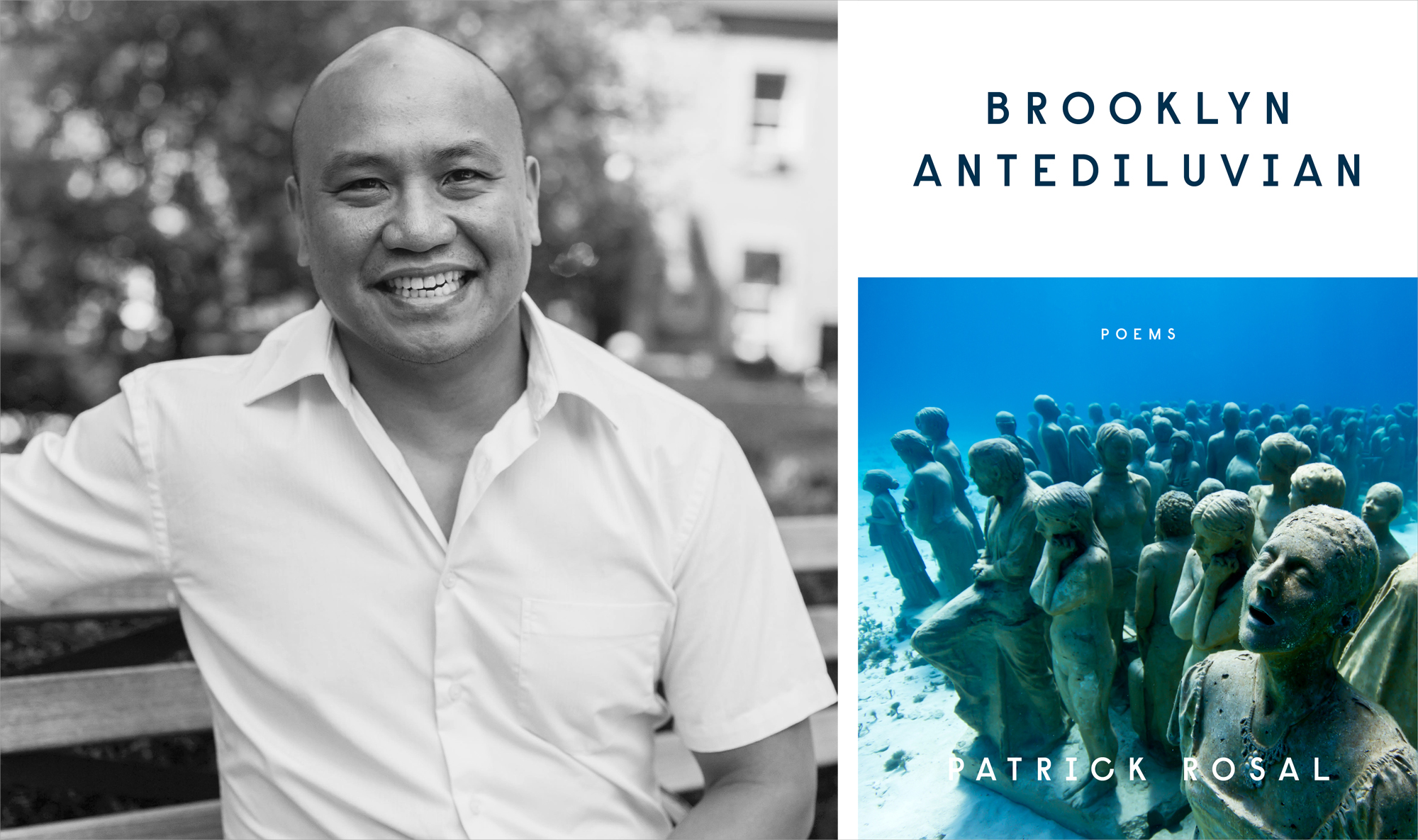
This month, we were delighted to have had the chance to converse with poet and professor Patrick Rosal about the recent release of his fourth collection, Brooklyn Antediluvian. In our discussion, recorded below, he reflects on the themes and mythologies that shape the book as well as on the publishing process and the influences that music and young people have had on his work. (For yet more on Rosal’s process and inspiration, you can find our previous interview with him here.)
* * *
LANTERN REVIEW: In Brooklyn Antediluvian, water is a central motif. It serves as a force that sweeps the movement of the collection along and is a metaphor for the violent submersion of identity enforced upon the colonial subject under the auspices of imperialism. How did you come to settle upon this motif? Why water, and what was it about the image of destruction by flood that compelled you?
PATRICK ROSAL: First, thanks for reading the book and doing this interview. I feel real lucky to have Lantern Review make space for this new collection.
Growing up in New Jersey, we were always in and around water. And I think we have a special relationship to water as Filipinos in America, having been the descendants of monsoon rains and of people who had to cross miles and miles of water (my grandfather was a sakada, a sugar laborer who sailed from Manila to Hawaii for work). Also, I have real specific memories of water—like my brother almost drowning when he was a toddler or the image of me and my cousins heading out to the Jersey shore mid-week to dive into the waves. And then there were the storms like Katrina and Ondoy and Sandy all in a relatively short period of time, each of which touched me in very personal ways. At some point, probably after I got a sense of the title poem, “Brooklyn Antediluvian,” I realized this book was going to be about waters and floods—which is to say, literal floods from those storms, but also the floods of memory, of roses, of violence, of joy, of names, of gentrification.
LR: The collection draws its name from the final piece in the book, a long poem that commands nearly a third of the text. What appeals to you about the long poem as a form? What was the process of drafting this particular long poem like for you, and what motivated your decision to structure the collection in this way, with the shorter poems up front and the long poem as a finale?
PR: My poems have been getting longer over the course of my four books. In Boneshepherds, I had a poem, “Ars Poetica: After a Dog,” that felt massive, and in a lot of ways it’s a heftier poem than the title poem of Brooklyn Antediluvian, though the more recent poem is a lot longer in terms of pages.
In “Brooklyn Antediluvian” I loved having enough space to make things disappear and then suddenly show up again. I loved getting lost as I was writing because the language kept leading me away from any static subject. And just when chaos might take over, some small connection to a previous image—a rose or horse or name or the boy whom the speaker meets in the first line—would come back. It’s a different kind of lostness from [what you might find in] a short lyric. It’s a study in departure. Also, it gave me a big enough world that many histories and continents—especially in small narrative scales—could exist in the same text. All of this, for me, is a metaphor for seeing and living. I want to see if it’s possible to build a world in language that accommodates epochs and landscapes that seem to have nothing to do with one another. This seems to be the source of a lot of our trouble—parts of our world are so belligerently segregated from one another. What does a Berber pope have to do with a Filipino dietician who died in New Jersey, anyway? A long poem doesn’t just reveal those unusual and often wonderful associations, it finds a music—a pleasing sonic pattern—with which to connect them.
When I first started compiling the poems I wrote after Boneshepherds, I felt a real strong impulse to make a book that could still reach people who don’t consider themselves poetry readers. When I drafted the long title poem, I knew I had something that was going to be challenging even for audiences that consider themselves aficionados of contemporary poetry. I sent the manuscript out to friends, and they made it clear to me that I needed to set up a world of images, places, figures, and rhythms to help prepare the reader for the long poem at the end. Originally, I had the long poem at the front of the manuscript. In the final version of the book, [in which the poem’s at the end], I think readers have a stronger relationship to the ways of looking and singing that the title poem tries to sustain for a longer period of time and on a much bigger scale, with much trickier leaps.